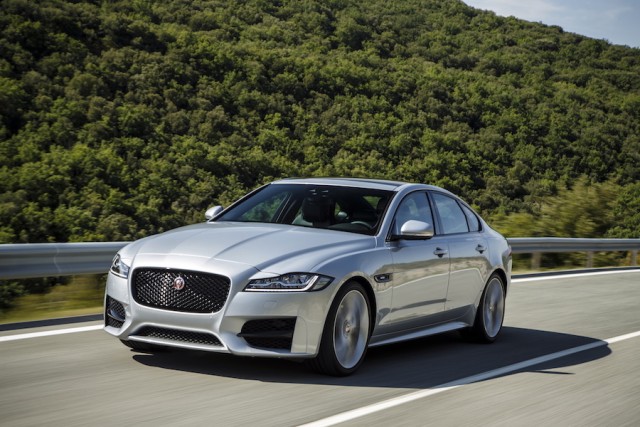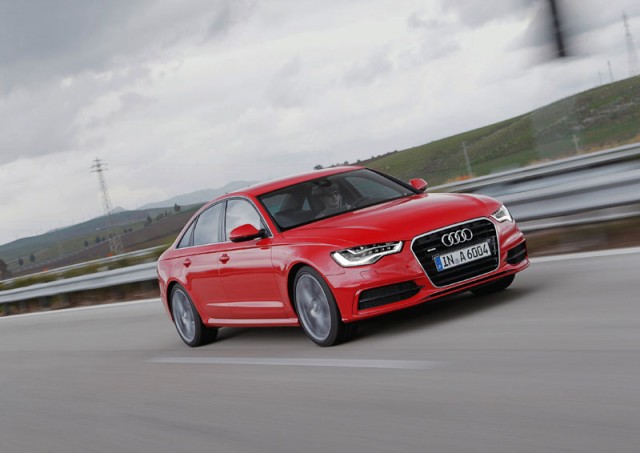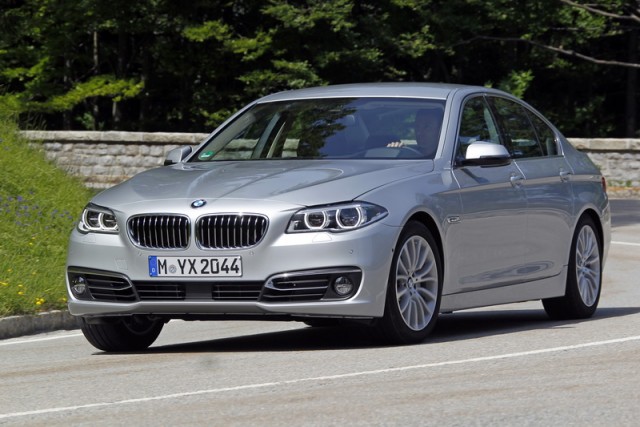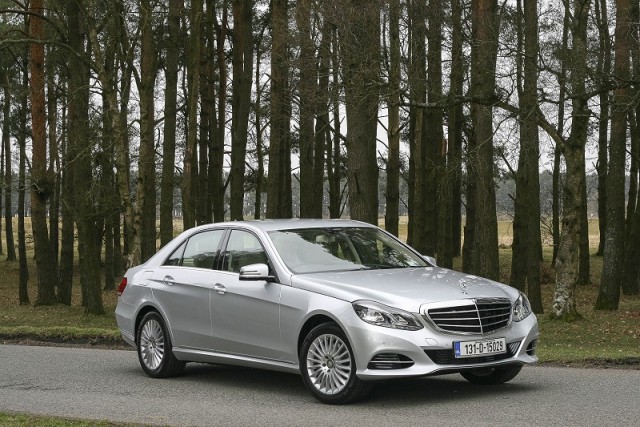The looks are predictably predictable, but the new Jaguar XF transcends its me-again styling with a high-tech chassis, significantly lower weight, a beefed-up infotainment offering and an efficient four-pot diesel. It's a touch noisy at times, and it'll be more expensive than before, but the sublime chassis and steering will make you forgive that.
In the metal 4/5
You'll pause for a moment when you first see the new Jaguar XF, eyes screwing up, brow furrowing as you plumb the depths of your mental image map to try and work out if it's the old one or the new one. It is strikingly similar to the 2007-2015 XF, and apparently very deliberately so - Jaguar's chief designer, the redoubtable Ian Callum, has said that the overall look is the same because Jaguar is trying, Audi-style, to build a global brand image where any one of its cars can be instantly recognised as a Jaguar. Differentiation between models can go hang, so not only is the XF like the old XF, it's also very much like a scaled up Jaguar XE.
The differences are there if you look though. The lights are more complex, more scowling and the grille is broader and more upright, with lines that draw downwards and into L-shaped flicks that lead into the air intakes and sorta-kinda mimic the lines of an F1 car's nose wing (a hat tip to the new XF's clever air management, which sees its coefficient of drag drop several points to 0.26). The car is actually a little shorter overall, but the wheelbase is significantly longer, by 51mm, much to the benefit of cabin space.
The interior is, at first sight, also a bit familiar. The overall style, the lines, the bathtub effect of the wraparound dash all look comforting to anyone who knows the old XF well. There are very significant differences here though. The first and foremost is the touchscreen. Out goes the old, and aged, XF touchscreen and in comes InControl Touch, which uses big, friendly Nokia-like graphics and a much speedier processor to make everything far slicker than it was before. Still not quite as good as BMW's iDrive or Audi's MMI? Ah but wait, more is coming. It's still at least six months away (possibly longer depending on how Ireland's Jaguar importer takes to get things sorted), but In Control Touch Pro is in the pipeline and its 10.2-inch screen is every bit as sexy and fast as anything the Germans can do. It also comes with a plethora of apps and phone connections that will even, eventually, allow you to start and stop your XF via your smartphone remotely, either to cool it down in warm weather or heat it up in cold.
It's a classier cabin than before too, in spite of some occasionally cheap plastic and lower grade leather in a few spots. The new analogue dials are bigger and clearer (and can be optionally replaced by a whizz-bang new 12.3-inch TFT instrument screen with a laser head up display) and the seat comfort, in spite of slimmed-down frames, is just excellent. Rear space is vastly improved too and there's a healthy 540-litre boot. There may not be an XF Sportbrake estate version this time around though. We quizzed Ian Callum about this, and he said, in a roundabout way, that design studies for such a car have been done (actually he said no comment, but winked when he did so), but that falling estate sales and the ever-rising clamour for SUVs could keep a MkII Sportbrake on the drawing board. Shame.
Shame too that few owners will look beneath the skin to find the hugely sophisticated aluminium-intensive structure beneath. It's a long, long way from the cast-off Ford chassis that the old XF rode on (and which dated back to the old S-Type) and it drops the kerb weight by as much as 190kg, as well as being much stiffer in torsion. There's much beauty in its hidden engineering geek appeal.
Driving it 5/5
You can have your XF in a spec a deal more sophisticated than this. Diesel and petrol V6 engines are available, with 300hp, 340hp and even 380hp. You can have fancy adaptive damping, clever traction control, active cruise, etc. etc. etc. Our test car, in R-Sport spec (which more or less mimics the muscular styling of a BMW M Sport pack) was relatively vanilla. It had the 180hp 2.0-litre Ingenium four-cylinder diesel engine, the eight-speed automatic ZF gearbox and plain old 'passive' suspension, albeit in lower, stiffer 'Sport' spec.
What's rather wonderful then is that this, the core XF model and the one that will appeal most to big fleet customers and savvy private buyers, is so utterly beguiling to drive.
Let's start with the steering. There came a point, in the early nineties, when hydraulically-boosted power steering finally caught up in terms of feel and feedback with older unassisted steering. If memory serves, it was a double-whammy of the Porsche 968 and Lotus Esprit S4 that finally broke the barrier between old-school and new-school. Well, I think that the new XF does the same for electric power steering. It's actually best sampled in Normal or Eco modes, selected by a button behind the gear selector. Sport adds weight, but to my hands, no extra feel and a slightly unnecessary stiffness. Normal is just perfect, with unerring weight and accuracy, and it's still very quick across its lock, but the best part is the feel; the constant light writhing of the wheel rim as it passes through your hands. It talks to you, tells you what the front Pirellis are up to. It's just lovely.
The rest of the chassis follows suit. Even on these passive springs, the ride quality is exceptional. Their Sport specification brings an occasional rumble and patter over a bad surface, but for the rest of the time all is controlled, firm, beautifully damped and never, ever uncomfortable. Even vicious speed bumps are nicely rounded off. Yet, in spite of the comfort, there is no float, no sense of disconnectedness, no unnecessary mid-corner roll. The XF, which is let's remember quite a sizeable car, flicks effortlessly from one direction to the other as you fire it up and down mountain passes, before settling into a comfy and refined lope on the motorway. It's a masterclass, nothing less.
The engine is good too, but only good - as in the smaller XE, it's a little too noisy when you ask for solid acceleration or when just tootling around town. It's better suppressed than in the XE, but still not perfect, and noticeably noisier than the current class benchmark, Volvo's D4 engine. Fuel economy should be a strong point though - Jaguar quotes 65mpg overall and even briskly driven, the XF gets close to that figure. The ZF-sourced eight-speed gearbox is as good as ever - slushing effortlessly between ratios when you want to, yet with an astonishing ability to put you in the right gear at the right time when pressing on.
What you get for your money 3/5
Irish prices and specs are yet to be finalised, but we've been told that the new car won't drift far from the pricing of the current model, and will be closely competitive with the BMW 5 Series and Audi A6. There's a catch though - all XFs of the old school were automatic only. The new one comes as standard with a manual gearbox, which effectively means that you're going to have to pay €2,000 or so extra to get like-for-like. Standard spec should be pretty generous though, and will include full leather, cruise control, two-zone climate and InControl Touch.
Summary
So, the new Jaguar XF is like the old XF - handsome, cool and trading heavily on its abilities as a proper driver's car. What's changed is the level of technological sophistication underneath, with infotainment, lightweight construction and a low-emissions diesel that can now meet the big Germans head on. A class act all round.































